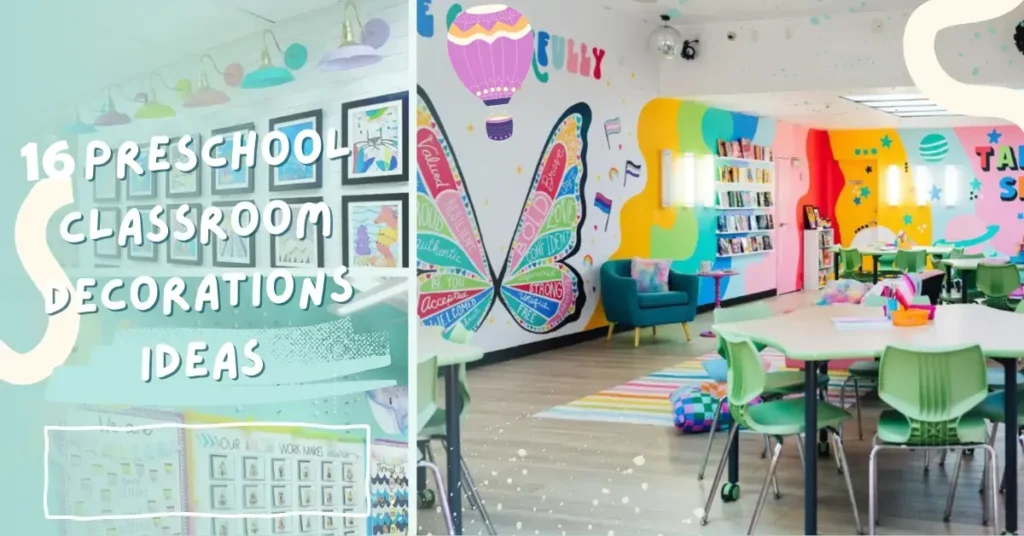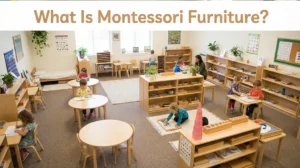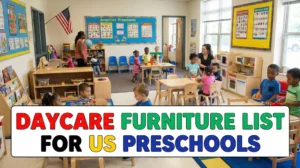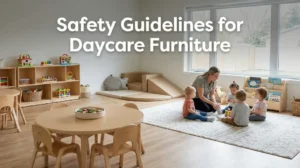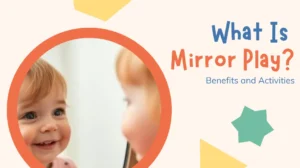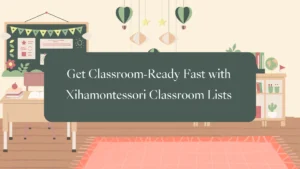In our previous post, “What Supplies You Need for Your Preschool Classroom,” we shared the essential supplies and materials for every preschool classroom. But isn’t your preschool classroom feeling a little drab? Looking for preschool classroom decorations ideas to create an inspiring learning environment for your little learners?
Preschool classroom decorations can be both exciting and challenging. It requires creativity, practicality, and a deep understanding of children’s needs. A well-decorated classroom enhances learning and makes children feel comfortable and happy.
If you’re a preschool teacher or administrator, you understand the importance of creating a welcoming and stimulating environment for your young learners. Preschool classrooms can’t just focus on curriculum education; environmental education is just as important. One way to accomplish this is through well-chosen preschool classroom decorations.
Why Decorate Your Preschool Classroom?
A well-decorated preschool classroom is not just about aesthetics; it creates a stimulating environment that fosters learning and development. Thoughtful decorations can make the classroom more engaging, organized, and conducive to various learning activities.
Decorating a preschool classroom can have many benefits for students and educators, including:
- Enhancing Learning: Pictures, alphabets, and numbers on the walls can help students learn and become more interested in their studies. Decorations can also act as reminder cues, assisting children in remembering educational information in the long term.
- Creating a Welcoming Atmosphere: Warm and inviting classrooms can make students feel more comfortable and positive, while cluttered or dull spaces can cause stress and anxiety. Light-colored walls and flooring can also help reflect and diffuse natural light, creating a sense of openness and brightness.
- Improving Self-esteem: Allowing children to decorate the classroom with their work can help improve their self-esteem and beliefs about the value of their work.
- Promoting Responsibility: Displaying student work can motivate toddlers in their daily learning and make them feel more responsible for their education.
- Encouraging Positive Behavior: Bright, colorful, and organized classrooms can positively influence children’s behavior. Children in an aesthetically pleasing environment are likelier to exhibit positive behavior and participate actively in class activities.
- Enhances Creativity and Imagination: Children are inspired to think creatively when classrooms are decorated with imaginative themes and interactive displays. Playful decor like a pirate-themed corner or jungle play area encourages imaginative play, a critical component of early childhood development.
- Keeps Children Engaged: Decorations that change periodically, such as seasonal bulletin boards or rotating thematic displays, keep the environment fresh and engaging. This prevents monotony and sustains children’s interest throughout the school year.
- Motivates Educators: A beautifully decorated classroom isn’t just for the kids—it also boosts teachers’ morale. Working in a vibrant, organized space can make educators feel more inspired, energetic, and ready to deliver meaningful lessons.
When decorating a preschool classroom, it’s important to remember that too much decoration can be disruptive. Some recommend keeping 20–50% of the wall space clear and filling the rest with student work, inspiring pictures, and learning aids.
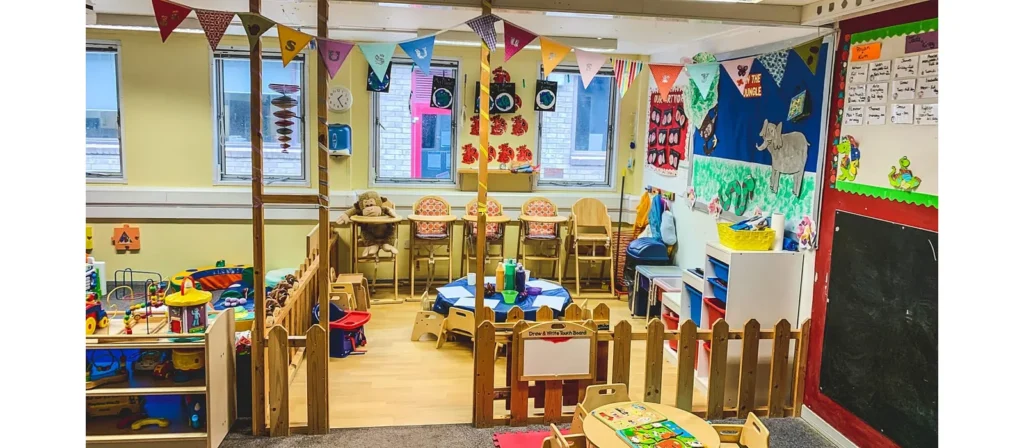
What to Consider Before Starting Your Preschool Classroom Decorations?
Before diving into colorful posters and playful wall art, it’s important to approach Preschool Classroom Decorations with careful thought and planning. A well-decorated classroom isn’t just about aesthetics—it’s about creating an environment that is safe, engaging, and developmentally appropriate for young learners. Here are the key factors you should evaluate before beginning your decorating process:
1. Classroom Functionality and Layout
Start by assessing the overall layout of your classroom. Decorations should enhance—not hinder—the flow of movement, play, and learning.
- Does the current layout support various activity zones (reading, play, learning, etc.)?
- Will your decorations obstruct walkways or classroom visibility?
- Are bulletin boards, windows, and walls accessible without overcrowding the space?
2. Age and Developmental Needs of Children
Preschool children vary in developmental stages, so decorations should be age-appropriate and aligned with their cognitive, social, and sensory abilities.
- Avoid overly complex visuals that may overwhelm younger children.
- Use large, bold imagery for easier recognition.
- Prioritize interactive or hands-on elements where possible.
3. Safety and Material Selection
Safety should always come first when planning your preschool classroom decorations. Choose materials that are non-toxic, durable, and securely attached.
- Avoid sharp objects, hanging cords, or breakable items.
- Use flame-retardant and washable materials.
- Ensure wall decor doesn’t peel off easily or pose choking hazards.
4. Educational Purpose
Decorations should contribute to the learning environment, not just fill space. Ask yourself:
- Does this support early literacy, numeracy, or social-emotional learning?
- Can this visual aid be used in daily routines or circle time?
- Will it spark curiosity or invite interaction?
5. Inclusivity and Cultural Sensitivity
Preschool classrooms often welcome children from diverse backgrounds. Your decor should reflect inclusion and respect.
- Include diverse characters, languages, and holiday representations.
- Steer clear of stereotypes or culture-specific symbols unless presented with context and care.
6. Flexibility and Seasonal Rotation
Plan your decorations in a way that allows for easy updates throughout the year.
- Use reusable elements like cloth banners or Velcro-backed displays.
- Designate rotating boards for seasonal themes or student artwork.
- Leave some space open for spontaneous or child-created additions.
7. Budget and Resources
Decorating doesn’t have to be expensive to be effective. Evaluate what you already have and plan for smart, budget-friendly updates.
- Reuse and repurpose materials where possible.
- Consider involving parents or volunteers for DIY decoration projects.
- Invest in a few versatile, durable decor pieces you can use year-round.
Key Principles for Preschool Classroom Decorations
Before you start decorating your preschool classroom, it’s important to pause and consider what truly makes an early learning environment both beautiful and functional. The right decorations should do more than brighten a room—they should help children feel welcome, supported, and excited to learn. Below are several essential principles that can guide you in making meaningful choices when it comes to preschool classroom decorations.
Start with Learning Goals
Decorations should always support the developmental and educational goals of your classroom. Think beyond cute and colorful—what you put on the walls should reinforce what children are learning. Whether it’s a number line above the whiteboard, alphabet posters near the reading area, or a weather chart that’s part of the morning routine, every visual should help build language, math, social, or self-regulation skills in a way that’s age-appropriate and engaging.
Keep It Clear and Uncluttered
While it’s tempting to cover every inch of the classroom with cheerful images and themes, too much decoration can become overwhelming. Young children process visual information differently from adults. A cluttered space may distract or confuse them. Use large, simple visuals with plenty of space around them. Avoid layering too many elements in one area, and leave room for breathing space—and for future student work.
Child-Centered Preschool Classroom Design
The best preschool classrooms reflect the children who learn in them. Decorations should be placed at children’s eye level and include personal touches like student names, self-portraits, and family photos. Displaying student work and incorporating their interests helps create a sense of belonging and ownership. When children see themselves represented in the classroom, they feel more connected to the space.
Prioritize Safety and Practicality
Preschool decorations must be safe for active, curious children. Avoid anything with sharp edges, hanging strings, or items that could fall easily. All materials should be non-toxic and securely fastened. Also think about ease of cleaning—laminated or wipeable materials are a great choice in a space where spills and sticky hands are part of daily life.
Create Visual Consistency
A consistent visual style throughout the classroom helps children feel more secure. This doesn’t mean everything has to match perfectly, but using a coordinated color scheme, repeating design elements, and organizing materials in a predictable way gives the space a calm, inviting feel. Visual consistency also supports classroom routines by helping children recognize different zones and materials more easily.
Encourage Interaction
Decorations shouldn’t just be something to look at—they can also invite children to interact with their environment. Add elements they can touch, move, or change: weather charts, job boards, daily question walls, or collaborative art displays. Interactive elements give children a sense of responsibility and autonomy, turning decorations into learning tools.
Plan for Change
Your classroom will evolve over the year, and your decorations should too. Whether you’re switching out seasonal themes, celebrating student milestones, or adjusting to new curriculum topics, it helps to use flexible materials that are easy to update. Consider using Velcro, clips, pocket charts, or reusable borders so you can refresh your displays without starting from scratch each time.
1. Preschool Classroom Decorations: Colors
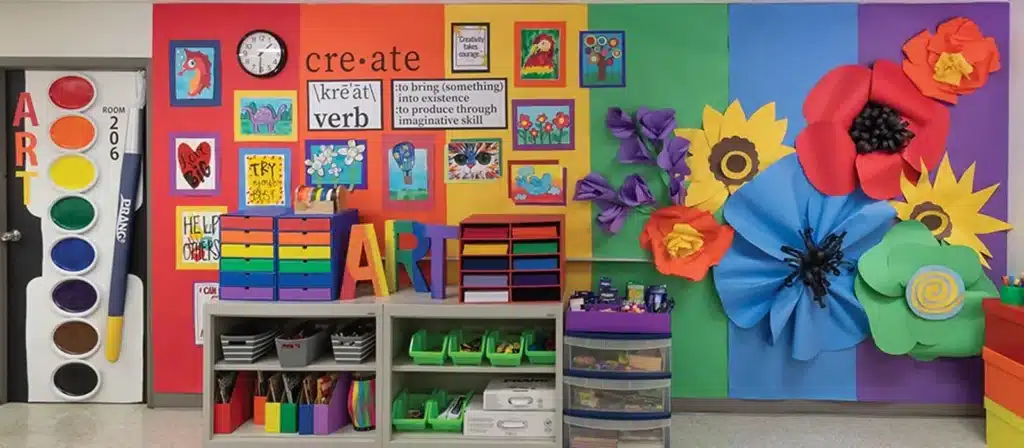
Colors play a vital role in preschool classroom decorations. They can influence mood, focus, and even behavior. What are the best colors for a preschool classroom?
- Warm Colors: preschool classroom decorations colors like red, orange, and yellow can energize and stimulate children, making them feel excited and ready to engage.
- Cool Colors: Blues and greens have a calming effect, which can help create a serene learning environment.
- Neutral Colors: These are great for balancing the vibrancy of other colors, ensuring the classroom isn’t overwhelming.
Implementing Colors Effectively
- Accent Walls: Use bold colors on one wall to create a focal point without overwhelming the room.
- Color Zones: Different classroom areas can have different colors to signify various activities, such as a blue reading nook or a yellow art corner.
- Furniture and Accessories: Use colorful furniture and accessories to add pops of color without permanent changes to the room
To decorate a balanced environment, consider combining bright and pastel colors. For example, you could paint the main walls in soft, soothing colors and use bright accents through the furniture and décor. This approach helps to stimulate children while also providing them with places where they can relax and focus.
Incorporate color through various elements, such as wall paint, furniture, carpeting and classroom supplies. Classroom decorating considers using colors to designate different classroom areas for specific activities, such as a red corner for art projects and a blue corner for reading. This not only adds vibrancy but also helps organize the space effectively.
2. Preschool Classroom Decorations: Lighting
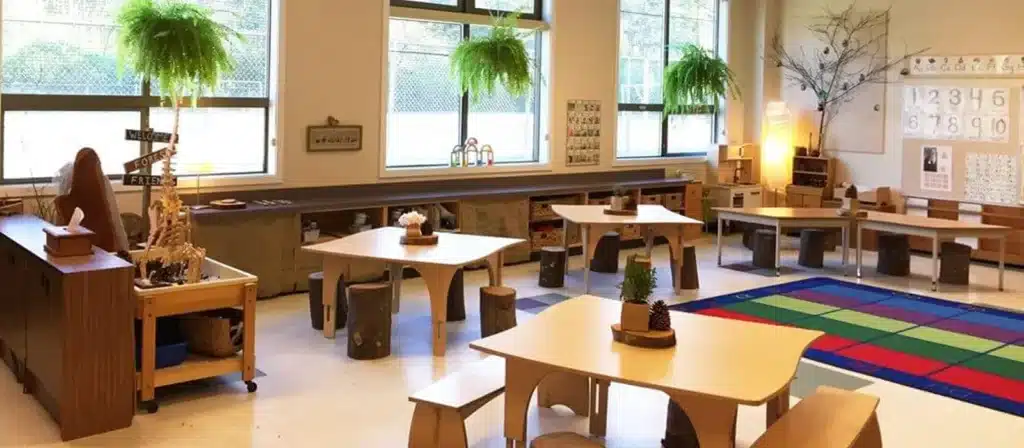
Natural light is the best choice for preschool classroom decorating as it has been shown to improve mood and productivity. Ensure your windows are clear to let in as much natural light as possible. Use light, airy curtains that allow light to filter through while still providing some shade.
You can add a touch of whimsy to your classroom with decorative lighting elements such as string or themed lights. These are particularly useful in creating cozy corners or highlighting specific areas, such as reading or art corners.
- Natural Light: Whenever possible, utilize natural light. It’s beneficial for mood and concentration.
- Soft Lighting: Use soft, diffused lighting to create a warm and inviting atmosphere. Avoid harsh, fluorescent lights that can be straining.
- Task Lighting: Provide lighting for specific activities like reading or art projects.
- String Lights: Soft string lights can add a whimsical touch and create a cozy atmosphere.
- Lamp Stations: Set up different lamps around the room for a more home-like feel.
- Light Tables: Incorporate light tables for sensory and exploratory activities, providing illumination and engagement.
3. Preschool Classroom Decorations: Wall Decoration
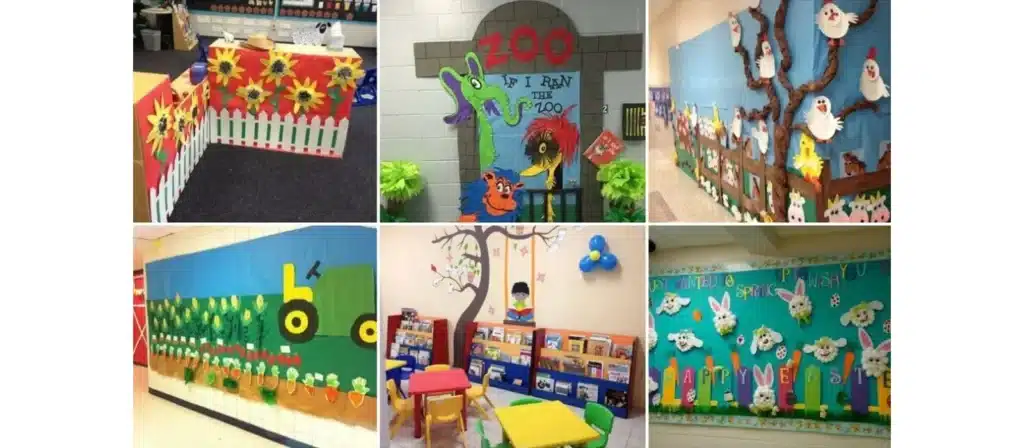
Walls offer a large canvas for creative and preschool room decorations. What are some effective wall decoration ideas?
- Murals and Decals: Use murals and wall decals to decorate themed areas like under the sea, jungle, or space adventures.
- Educational Posters: Display posters that teach alphabets, numbers, shapes, and colors.
- Interactive Walls: Incorporate interactive elements like Velcro boards, magnet walls, and sensory boards to engage children in hands-on learning.
- Rotating Displays: Change wall displays regularly to keep the classroom fresh and aligned with current learning themes.
- Student Contributions: Dedicate a wall section to display student artwork and projects. This not only decorates but also instills a sense of pride and ownership in the children.
- Themed Sections: Create wall sections for different subjects, such as a science corner with nature posters or a reading corner with literary characters.
4. Preschool Classroom Decorations: Bulletin Board
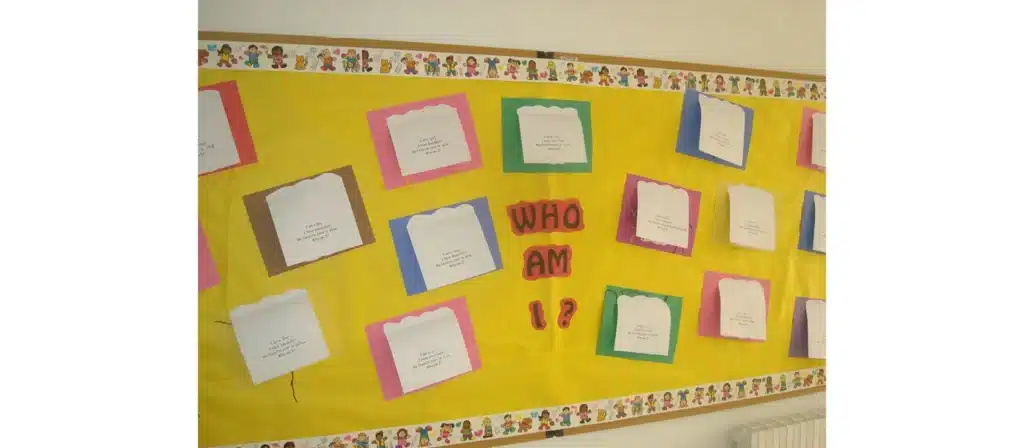
Bulletin boards are versatile tools that can be used for various purposes, from displaying student work to showcasing important information. They can display important information, student work, and thematic decorations. One idea is to create a seasonal bulletin board that changes with the seasons, featuring themes like autumn leaves, snowflakes, and spring flowers.
- Seasonal Themes: Change the bulletin board to reflect different seasons or holidays, incorporating relevant educational content.
- Interactive Boards: Create boards where children can add input, such as question-of-the-day or interactive storyboards.
- Learning Boards: Use bulletin boards to reinforce current lessons, such as a math board with counting games or a language board with new vocabulary words.
- Student Involvement: Allow students to help create and update the bulletin boards. This involvement can enhance their learning experience and make them feel valued.
5. Showcase Student Work
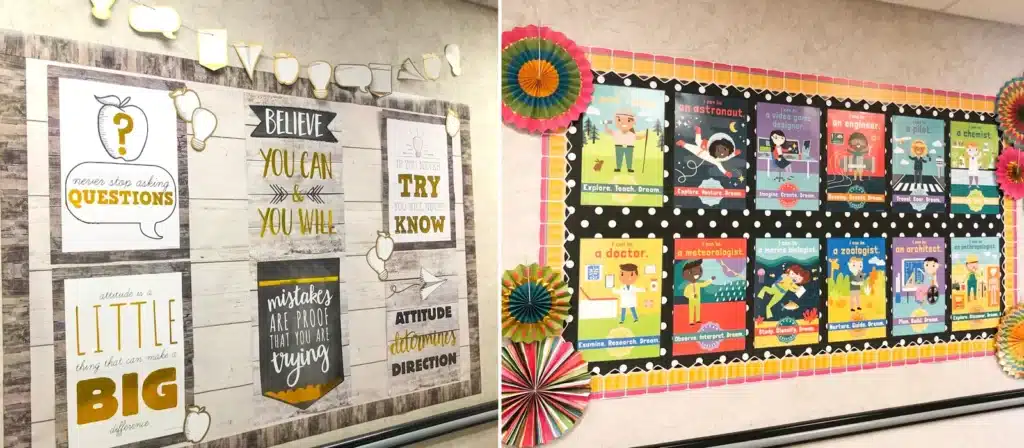
Showcasing student work is a wonderful way to decorate the classroom and boost children’s self-esteem. Dedicate specific classroom areas to display art projects, writing samples, and other achievements. Use frames, clipboards, or wire and clothespins to create a rotating gallery of student work.
Consider setting up a “Star of the Week” display where a different student is featured each week. This can include their artwork, a photo, and a short bio. It’s a great way to make each child feel special and recognized.
- Dedicated Display Areas: Designate specific classroom areas for showcasing student artwork, writing projects, and other creations.
- Rotating Exhibits: Regularly update the displays to highlight different students and projects, ensuring everyone can shine.
- Themed Galleries: Organize student work by themes or projects, such as a science fair section or a seasonal art gallery.
- Clipboards and Frames: Use clipboards, frames, or hanging wires to display artwork and assignments neatly and accessible.
- Digital Displays: Incorporate digital picture frames or projectors to showcase student work digitally, allowing for dynamic and varied presentations.
- Interactive Displays: Create interactive displays where students can leave comments or questions about their peers’ work, fostering a collaborative and supportive environment.
6. Overuse of Visual Aids

Visual aids are essential in preschool classroom decor, but too many can be overwhelming. How do we avoid overuse and still benefit from them?
- Selective Use: Choose visual aids that align directly with your teaching objectives. Too many visuals can distract rather than enhance learning.
- Clear Organization: Ensure that visual aids are well-organized and easily understandable. Group similar items together and avoid clutter.
- Interactive Elements: Incorporate interactive visual aids like flaps, wheels, or magnetic boards that children can manipulate to reinforce learning.
- Color Coding: Use color coding to help differentiate between different types of information, making it easier for children to process.
7. Avoid Chaos in Preschool Classrooms

A well-decorated classroom should be visually stimulating but not chaotic. A cluttered classroom can be distracting for young learners. To maintain an orderly environment, use storage solutions that keep materials organized and out of sight when not in use. Invest in shelves, bins, and cubbies that are easily accessible for children.
- Defined Areas: Create clearly defined areas for different activities, such as a reading corner, art station, and play area. Use rugs or furniture to demarcate these spaces.
- Storage Solutions: Ensure ample storage to keep materials organized and out of sight when not in use. Bins, shelves, and cubbies can help maintain order.
- Consistent Themes: Stick to a consistent theme or color scheme to create a cohesive look and feel.
- Label Everything: Label shelves, bins, and areas so children know where to find and return items.
- Routine Clean-Up: Incorporate clean-up times into the daily schedule to teach children responsibility and keep the classroom tidy.
- Minimalist Approach: Less can be more. Focus on quality preschool classroom decorations rather than quantity to avoid visual overload.
8. Preschool Classroom Decorations: Carpet
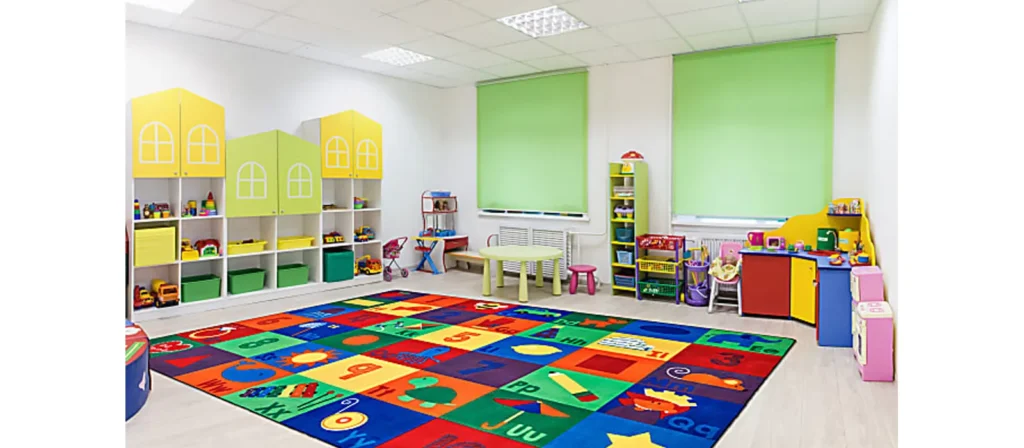
They provide a soft surface for children to sit on during circle time, reading sessions, and play activities. Choose carpets with bright colors and educational patterns like letters, numbers, or maps.
Ensure the carpet is easy to clean and durable, as it must withstand heavy use. Stain-resistant materials are a good option for a preschool setting. Regular cleaning and maintenance are crucial to keep the carpet looking fresh and hygienic.
Consider using multiple rugs to define different areas of the classroom. For example, a large rug for the main gathering area, smaller rugs for reading nooks, and a rug in the art area to protect the floor from spills. This not only adds visual interest but also helps organize the space.
9. Incorporate Natural Elements

Bringing elements of nature into the classroom can create a calming and nurturing environment. Use plants to add greenery and fresh air. Choose low-maintenance plants that are safe for children and can thrive indoors, such as spider plants, pothos, or succulents.
Natural materials like wood, stone, and wicker can add warmth and texture to the classroom. Consider wooden furniture, wicker baskets for storage, and natural fiber rugs. These elements create a cozy and inviting atmosphere.
Incorporate nature-themed decorations, such as posters of animals, leaves, and flowers. Use natural light as much as possible by keeping windows unobstructed and using light, airy curtains. This brightens the classroom and helps create a connection to the outside world.
- Calming Effect: Natural elements can reduce stress and create a serene learning environment.
- Hands-On Learning: Use nature corners where children can explore natural objects, such as leaves, rocks, and shells, fostering curiosity and exploration.
- Sustainability Lessons: Use natural materials and conservation projects to teach children about sustainability and the environment.
10. Preschool Classroom Decorations: Maintain at Eye Level
Keeping decorations at children’s eye level is essential. This approach makes the classroom more interactive and accessible. It ensures that children can fully engage with and benefit from the visual stimuli around them.
Placing decorations at children’s eye level allows them to interact with the environment more effectively. This includes posters, artwork, and educational charts. It’s important to consider their perspective to make the classroom more inviting and stimulating.
- Eye-Level Displays: Place posters, charts, and interactive elements at children’s eye level. This ensures they can easily see and engage with the materials, making learning more interactive and accessible.
- Accessible Storage: Ensure that storage for learning materials and toys is within easy reach of the children. Use low shelves and bins so they can independently choose and return items, fostering a sense of responsibility.
11. Preschool Classroom Decorations: Classroom Themes

Classroom themes can transform a space, making it more engaging and exciting for children. Themes also help organize the classroom and make transitions between activities smoother. Choosing a classroom theme provides a unified look and enhances the learning environment. Themes can be educational, reflecting topics being studied, or simply fun and imaginative.
- Nature-Inspired Classroom: Incorporate elements of nature such as trees, animals, and weather patterns. Use green and brown tones to create a calming atmosphere.
- Alphabet and Numbers: Decorate your classroom with colorful letters and numbers. This not only adds a vibrant touch but also aids in learning.
- Seasons and Weather: Change your decorations to reflect the current season or weather. This can include winter snowflakes, spring flowers, summer suns, and autumn leaves.
- Space Exploration: Ignite curiosity with a space-themed classroom. Use stars, planets, and rockets to decorate the walls and ceilings.
- Under the Sea: Create an underwater adventure with fish, corals, and ocean creatures. Use blue tones and wave patterns to mimic the sea.
- Fairy Tales and Fantasy: Bring fairy tales to life with castles, dragons, and magical creatures.
- Transportation: Decorate with cars, buses, airplanes, and boats. This theme can teach children about different modes of transportation and their uses.
- Farm Life: Introduce farm animals and rural settings into your classroom decor.
Themed decorations make the classroom feel cohesive and help children anticipate the activities associated with each area.
12. Preschool Classroom Decorations: Create Defined Spaces

Defining different areas in the classroom for specific activities can help with organization and flow. This includes areas for reading, playing, and arts and crafts.
Creating defined spaces in the classroom helps manage activities and keeps the environment organized. Use rugs, shelves, and decorations to mark these areas. This makes it easier for children to know where to go for different activities, fostering independence and structure.
- Reading Nook
- Art Corner
- Science Station
- Dramatic Play Area
- Puzzle and Game Zone
- Quiet Zone
Clear boundaries within the classroom can enhance both learning and behavior management.
13. Regularly Replace Decorative and Learning Materials
Keeping the classroom decorations fresh and relevant is essential. Regular updates prevent the environment from becoming stagnant and keep children engaged.
Regularly updating decorative and learning materials ensures the classroom remains dynamic and stimulating. Rotate posters, change bulletin boards, and introduce new interactive elements. This keeps the classroom environment lively and aligned with the curriculum.
14. Don’t Forget the Ceiling
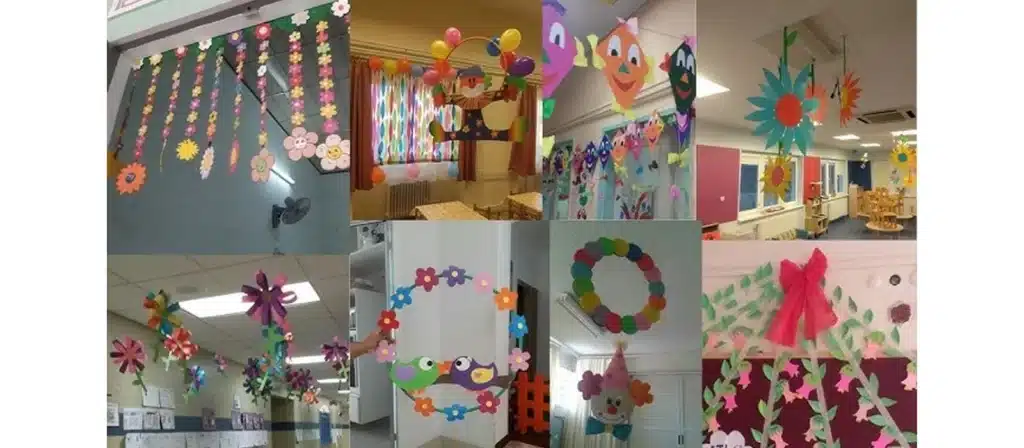
Ceiling decorations can add a unique dimension to the classroom. Hanging decorations, like mobiles or paper lanterns, can create an immersive environment and utilize all available space.
Incorporating ceiling decorations can make the classroom feel more dynamic and engaging. Use hanging decorations to add visual interest and create a stimulating atmosphere. This also helps maximize the use of space in the classroom.
Hanging Mobiles
Hanging mobiles can transform a classroom ceiling into a dynamic learning space. Mobiles with bright colors and various shapes can capture children’s attention. Teachers can use mobiles to introduce themes like animals, planets, or letters. Mobile Preschool Storage Cabinets can store these themed mobiles when not in use. This ensures that the classroom remains organized and clutter-free.
Twinkling Lights
Twinkling lights add a magical touch to any preschool classroom. String lights can create a calming atmosphere during storytime or nap time. Teachers can hang lights in patterns to form constellations or other educational shapes.
15. Preschool Classroom Decorations: Preschool Furniture
Choosing the right furniture is a crucial part of classroom decoration. Preschool furniture should be functional, safe, and suited to the needs of preschoolers.
Selecting appropriate preschool furniture enhances functionality and safety. Opt for child-sized, sturdy furniture designed with rounded edges. This ensures comfort and promotes independence and safety in the classroom.

1. Child-Sized Furniture
Use child-sized furniture that is comfortable and accessible for preschoolers. This includes tables, chairs, and storage units designed for height and size.
2. Multi-Functional Furniture
Incorporate multi-functional furniture like storage benches or tables with built-in shelves. This maximizes space and keeps the classroom organized.


3. Colorful and Themed Furniture
Choose colorful and themed furniture to match your classroom’s decor. This can make the space more inviting and cohesive.
4. Color-Coded Storage
Organized storage with color-coded bins makes it easy for children to find and put away materials.


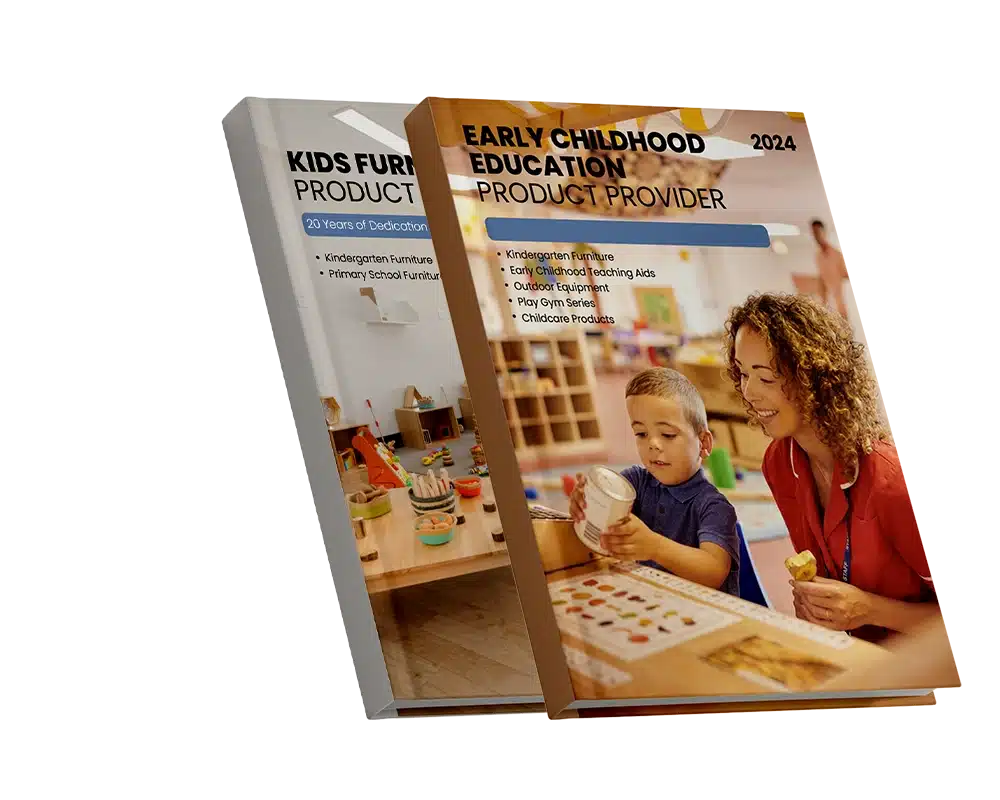
16. Preschool Classroom Decorations: Keep Safety in Mind
Safety should always be a priority when decorating a classroom. Choose decorations that are safe, durable, and non-toxic. Avoid small, detachable parts that could pose a choking hazard and ensure all items are securely attached. This creates a safe learning environment for young children.
Key Elements:
- Secure Fixtures: Make sure that all wall hangings and ceiling decorations are securely fastened and out of reach of children.
- Non-Toxic Materials: Use non-toxic paints, adhesives, and materials for all decorations.
- Clear Pathways: Maintain clear pathways free of obstructions to ensure children can move around the classroom safely. Arrange furniture and decorations to allow easy access to exits.
Frequently Asked Questions about Preschool Classroom Decorations
- What kinds of preschool classroom decorations support emotional development?
Decorations that acknowledge feelings, friendships, and community can support young children’s emotional growth. Consider adding emotion charts, “kindness trees,” or collaborative artwork that highlights teamwork. Featuring student names, photos, and contributions on the walls can also help children feel valued and connected. - Should I use holiday-specific preschool classroom decorations?
Holiday decorations can be fun and festive but should be used thoughtfully. Not all families celebrate the same holidays, so if you choose to decorate for one, consider offering alternatives or including a variety of celebrations. Or, focus on universal seasonal themes—like “winter,” “friendship,” or “giving”—that are more inclusive and still engaging. - What are the best decorations for a small preschool classroom?
In a small classroom, less is more. Choose functional decorations supporting learning, like wall-mounted calendars, visual schedules, and alphabet or number charts. Vertical space becomes valuable, so make use of walls and doors for educational displays. Keep the space open and avoid bulky hanging decor that could make the room feel crowded. - How do preschool classroom decorations impact learning?
Effective preschool classroom decorations support learning by reinforcing key concepts, helping with classroom routines, and creating a calm, organized space. For example, visual schedules help children understand daily structure, while word walls and number lines build early literacy and numeracy skills. Overly busy or irrelevant decorations, however, can become distracting. - What’s the best way to involve children in preschool classroom decoration?
Letting children participate in decorating helps build ownership and community. You can invite them to create artwork for the walls, decorate name tags, contribute to seasonal displays, or help assemble learning charts. Even simple tasks like adding stickers to a weather board give preschoolers a sense of contribution and responsibility.
Conclusion
Decorating a preschool classroom is a rewarding task that can significantly impact the learning environment. By incorporating these 16 ideas, you can create a space that is not only visually appealing but also conducive to learning and development.
Remember, the key is balancing aesthetics and functionality, ensuring that preschool classroom decorations serve a purpose and enhance the classroom experience.

